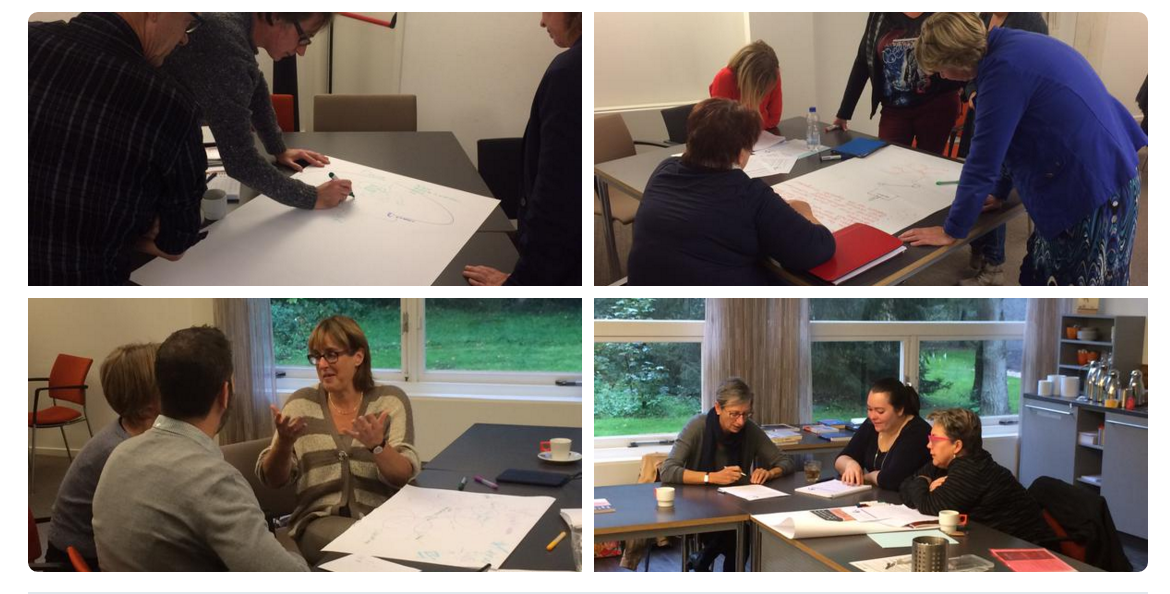
We organized a teamhackathon. Teams can make big steps in working and collaborating online in a smart way. The teamhackathon was really fun and I hope that many more teamhackathons will follow. In the picture it looks like it was a normal workshop, but is certainly wasn't.... The novelty of the Teamhackathon is:
- People do not join individually but in teams of - 2-4 persons ...
- They are working during the day on the basis of a concrete question around 'collaborate smarter online' ....
- They get team coach throughout the day ...
- Can use six different experts ...
- They work to produce a clear product, as in the case of my team an infographic...
- the rider (the vision, why)
- the elephant (the motivation)
- the path (make it easy)

What may go wrong? An example of what may go wrong if no or insufficient attention is paid to this element (the rider, the elephant, the path).
1. The rider gets lost. The rider of the elephant does not know which way to go to if there is no clarity what the intended change is and what effect the change should provide. In this case it is difficult for people to act. Suppose you have a social intranet, and you say that it is for "knowledge sharing". Knowledge sharing is too vague. This gives people no direction and you let them swim (or drown) guessing what exactly is expected of them. It could be that you want to encourage more innovative projects between departments. In that case, you can specifically identify this, brainstorming about possible projects, and provide a place for innovative projects on the social intranet.
2. The elephant is not motivated. If the elephant is not motivated, he will not move in any direction. And here you may change the word elephant for professional. Yesterday was mentioned several times how stubborn professionals may be. So really should think about the motivation of these professionals. What do they have in mind? Suppose there is a major re-organization under way in the organization, with layoffs and insecurity. Then you will not get people motivated to exchange openly online, it is too unsafe. You may get them sharing, but the question is how honest this will be. Motivation is often high if you have invented something yourself. So invent it together.
3. There is no clear or easy path. A clear path is about technology that is easy, not frustrating. It is also about easy ways of fitting the use of technology into routines. If it is not easy enough people will get discouraged. I got myself a new banking Reader and had my own moment of desperation. this old system was already hard. For a week it lay on my desk but I could not motivate myself to start using the new reader. Yet, when I had tried the new reader, I was euforic! It was a lot easier than the old reader. Another good example shared during the teamhackathon: every communication officer sends one tweet per day. Now that's a clear path. That's difficult to miss. :) If only it is clear why and the elephant is motivated.

No comments:
Post a Comment